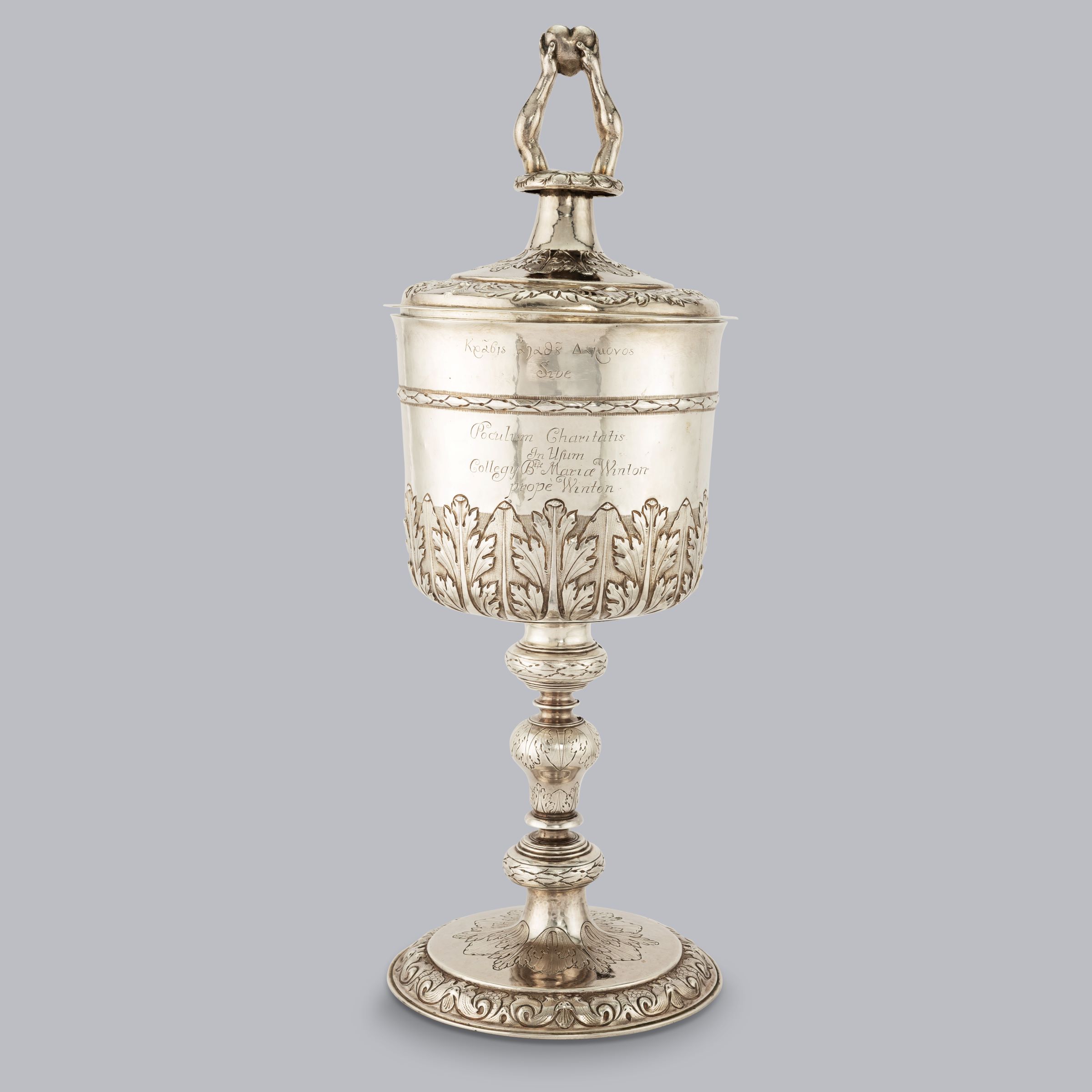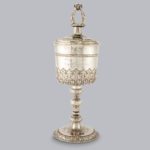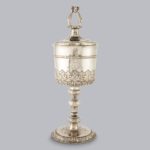
Cup and Cover, 1680 [Si14]
London, 1680; maker’s mark: TC (Thomas Cooper)
Silver: H. 61.5 cm, D. 22 cm, 3842 g
Inscribed below the rim: [Greek] Sive / Poculum Charitatis / In Usum / Collegii Bta: Mariae Winton / prope Winton [The noble spirits mix, or, loving cup for the use of the College of the Blessed Mary of Winchester near Winchester]
The handle of the cover is formed by two hands raised, holding a heart. The Greek inscription refers to an ancient deity, the Agathos Daimon, a household god to whom libations were poured after a meal. As the Latin inscription indicates, this cup was a shared drinking vessel (loving cup) to be passed around on ceremonial occasions.
Cups of this form, with a tall baluster stem and straight-sided bowl, were popular during the reign of Charles II. This is a particularly impressive example, but it is still smaller than a standing cup in the Kremlin, made by Francis Leake in 1663, which is 74 cm tall. A cup with similar acanthus leaf decoration, dated 1681, is in the collection of the City of Nottingham.
The cup is first recorded in an inventory from 1693, where it is described as: ‘a Great Silver Bowl & cover the gift of Dr. Osgood’. The donor, Richard Osgood L.L.D., was a Scholar of Winchester College (1642) and Fellow from 1659 until his death in 1693.
Literature: Percy MacQuoid, ‘The Plate of Winchester College’, The Burlington Magazine, vol. 2, no. 5 (July 1903), p. 162, plate VIb; Charles James Jackson, An Illustrated History of English Plate, 2 vols (London, 1911), pp. 250-51 (illustrated); W.W. Watts, Old English Silver (London, 1924), p. 69; Charles Oman, ‘The Winchester College Plate’, The Connoisseur, January 1962, p. 8 (illustrated).
Provenance: Gift or bequest of Richard Osgood (Fellow, 1659-93) by 1693
Location: Treasury, Gallery 1

